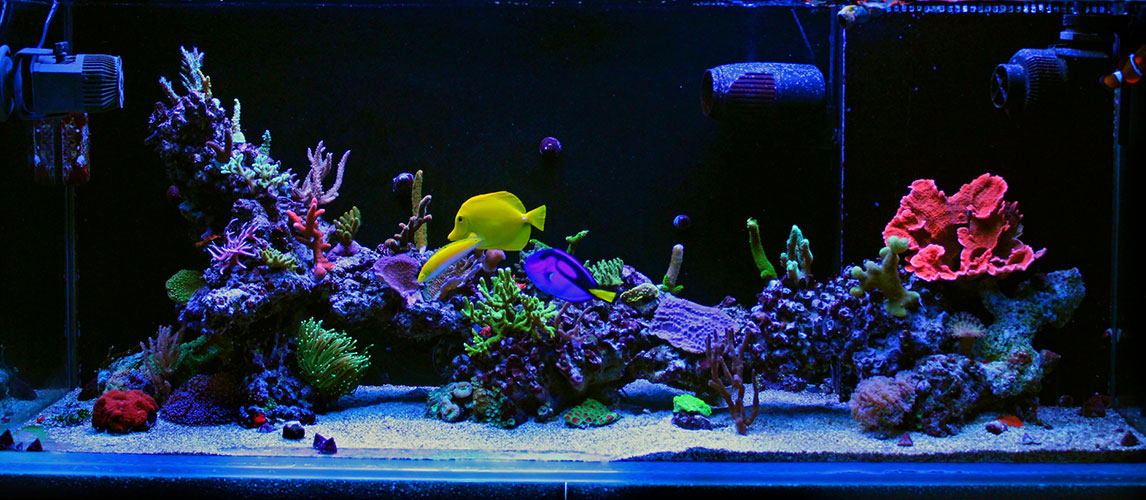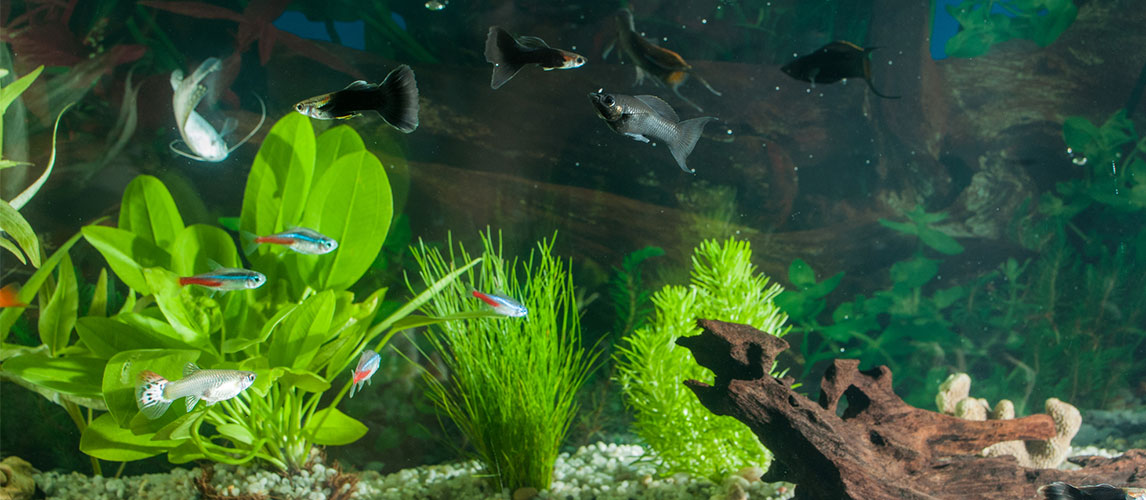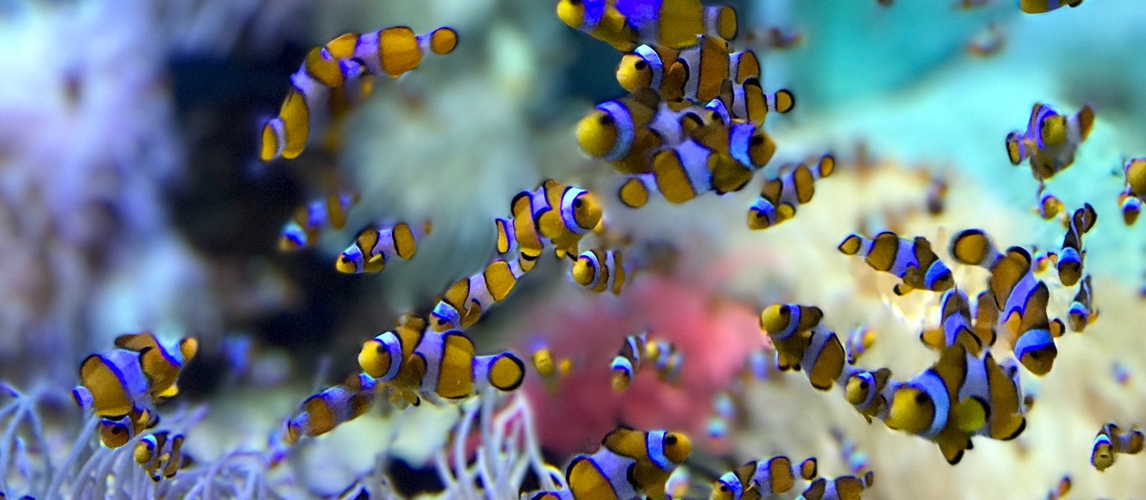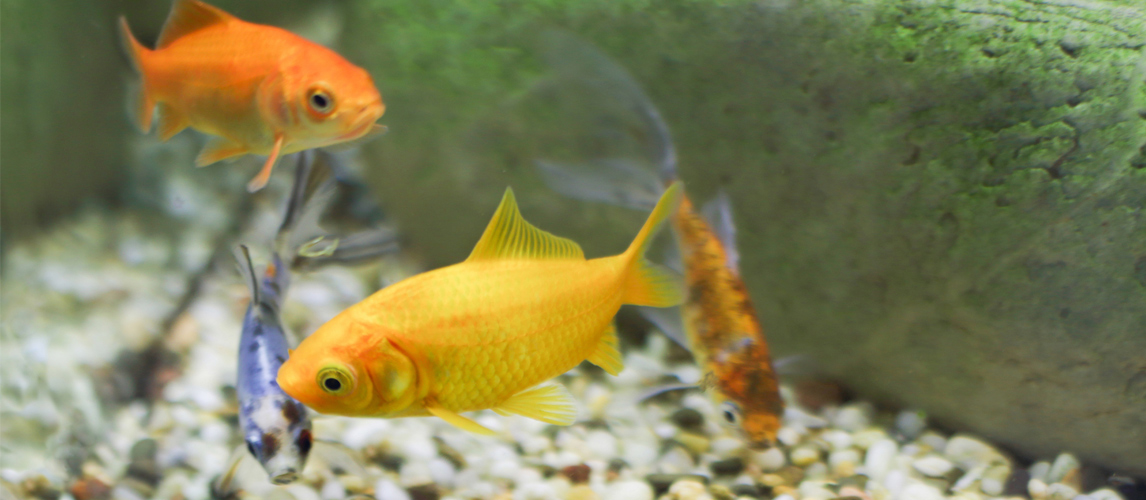Known for sneaking in to your ideal aquarium before quickly running amok, algae can quickly ruin an otherwise very comfortable home for your fish. Luckily, there are ways to naturally rid your tank of this scourge by bringing in freshwater algae eaters. Able to quickly and efficiently bring your algae problem back under control, we’ve researched the best algae eaters to introduce to your tank.
Below, we answer all the major questions surrounding algae in your aquarium, as well as giving you a comprehensive list of algae eater fish and aquarium cleaning fish that will allow you sit back, relax and enjoy your pets. All the while, knowing that your aquarium is being catered for on a regular basis.
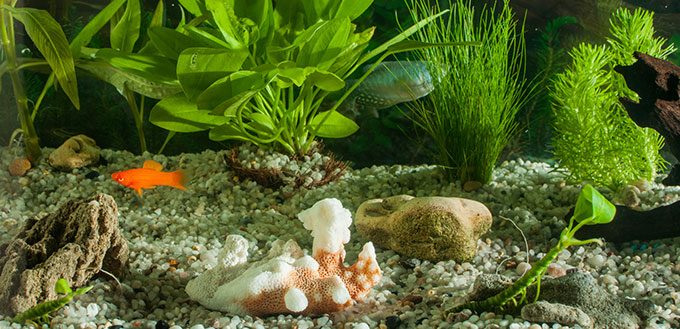
What is Algae?
Diverse and hard-wearing, algae come in a wide range of different forms. Seaweed, for example, is a common algae that can be found almost anywhere in the world. Because there are so many variations, it’s hard to narrow down a short answer to what algae is, so they are commonly referred to as large groups, despite their very different nature.
While some may be multi-cellular, others can be unicellular. However, the main component that links all algae together is that they are capable of photosynthesis and derive their nutrition from light. While some forms may live symbiotically with other species (such as sponges and mollusks) it is generally agreed that too much algae is harmful to your fish and fish tanks.
Why is Algae Bad for Aquariums?
Generally speaking, algae is considered a prime symptom of a neglected fish tank. At the same time, having algae is a natural part of keeping fish and can even be helpful in established aquariums. Confused? Like all good things, the key lies within healthy moderation.
While a bit of algae can help provide added nutrients to your fish, as well as helping to filter water and maintaining hydrogen and CO2 levels in your tank, too much can quickly overtake your aquarium. Because they reproduce asexually – in that they grow by splitting their cells – they can rapidly spiral out of control.
In doing this, they take more from their environment than they are able to give back. In other words, they take more than they can give, once they have developed to a certain level. This is why it’s so important to maintain healthy levels of algae using an algae eater.
Why Does My Fish Tank Keep Getting Algae?
It can be frustrating to know that, despite the very best care, even the finest and most expensive set-ups can develop algae. This is because algae is spread quickly via spores, which can be transported through the gut of fish, on live plants and even your new, healthy fish – not to mention that they can even be airborne. It doesn’t help that many of the microscopic spores can lay dormant in your tank, until the exact conditions cause them to rapidly reproduce, meaning it’s extremely difficult to stop algae all together.
Added to this, there are many different forms of algae – all of which have their own preferences in habitat. This makes it all the more difficult to stop the protist (a group of organisms that do not fit into the category of animal, plant or fungus) from spreading. That’s why the best algae eaters aren’t picky about which types they fancy for their dinner, as they can happily chomp through brown, green-hair and blue-green algae alike – and more!
How Can I Avoid Algae Without Getting More Fish?
If you don’t want to purchase a new algae eater fish for your tank, a lot of upkeep will be required. Since algae can break down your filtering equipment, as well as quickly affect the biodiversity of your aquarium, regular cleaning and lots of elbow grease it required – and none of this will ensure that your algae will remain at healthy levels in the same way freshwater algae eaters can.
The best way to combat algae without aquarium cleaning fish is to find out which type you have, first. Some algae will spread when there are increased levels of phosphate in the water (usually caused by overfeeding) or high levels of nitrates. Others are caused by low levels of nitrates or simply a poor circulation. Putting it simply, you can avoid algae in your tank by working hard to maintain the ultimate environment.
The good news, however, is that you can pretty much always get rid of harmful algae and slow the growth of algae through entirely natural measures. This means you should never have to add in potentially harmful chemicals when cleaning and adjusting your tank, to better suit the needs of your own set up.
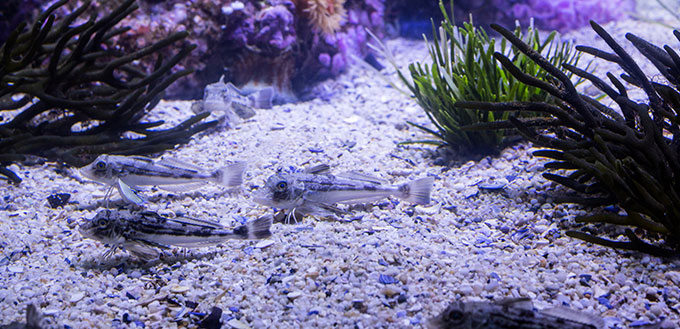
Do LED Aquarium Lights Cause Algae?
LED’s can be an essential part of your fish tank, as the right lighting affects the health of your fish. Unfortunately, algae growth can occur no matter what type of lighting you use (whether it’s standard fluroscent lights or LEDs), because different levels of lighting provide sufficient environmental changes to encourage different algae growth.
How to fight your algae with lighting will depend on the type of algae you have. For example, brown algae will thrive in low level lighting, meaning you can increase the brightness of your lamps, or change the lighting cycles, to help combat this. However, green-hair algae is caused by too much light, meaning you’ll need to change these to shorter light cycles or decrease the brightness in order to fight the growth of this algae.
What Kind of Algae is Good for Fish Tanks?
Green hair algae and brown algae are the best types to have in your aquarium (although, again, moderation is absolutely essential to healthy algae levels), for most. These types are great for filtering the water and ridding your tank of any harmful toxins which may be hanging around.
Do Snails Eat Algae?
Many freshwater snails can live harmoniously with algae because they are able to digest many different types. However, there are a few algae eating snails which are better suited to different environments – and not all snails will be good for your set up. We name some of the best in our list of best algae eaters, below.
Best Algae Eaters and Aquarium Cleaning Fish
Now that you know the basics of algae and helping to reduce the level of algae present in your tank, it’s time to take a look at the best freshwater algae eaters. Be mindful of the conditions each of these options require, as this will help you decide on the right algae eating fish and algae eating snails for your needs.
Siamese Algae Eater
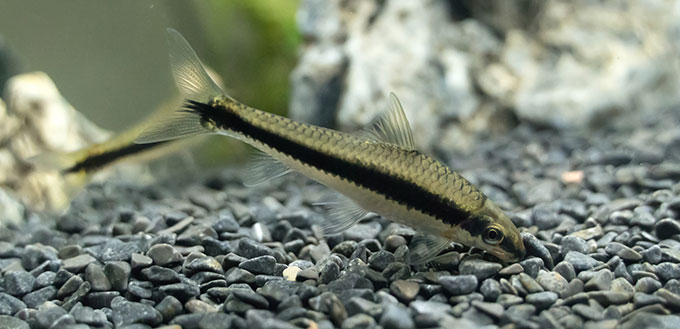
As well as looking great in your tank, the Siamese Algae Eater does exactly what their name suggests. They are tireless in their relentless pursuit of all things algae and are also a fantastic aquarium cleaning fish, as they’ll also hoover up leftover food. Thus, these little guys also work to ensure your tank will remain cleaner for longer, as well as helping maintain good levels of minerals in your water.
Be aware that these algae eating fish can become pretty territorial, so keeping numbers low is key. Not only will this ensure that no fights break out, it also means that the amount of algae and leftovers eaten will remain at beneficial levels. They’re also excellent swimmers (and jumpers) so will need a large enough tank to remain happy, and you’ll need to keep an eye on them when lifting the lid of your aquarium.
These guys thrive in water with high levels of oxygen and water temperature which is set around the 77°F mark. They’ll grow up to 2 inches in length and are generally very happy with most types and species of fish.
Nerite Snail
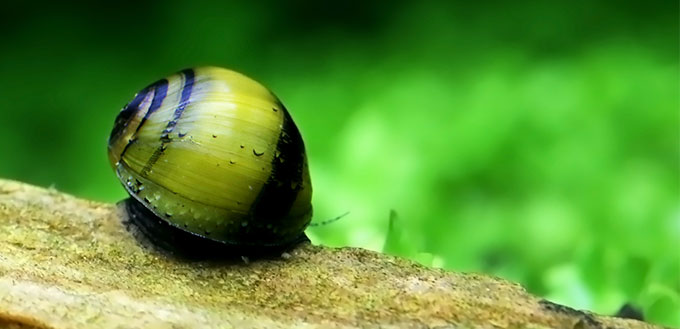
One of the top contenders in algae eating snails, the Nerite is known for it’s stripy shell and they are therefore relatively easy to spot in your aquarium. These guys have a huge appetite, so will have a never-ending desire to eat algae that is often very hard to clear from your tank, such as the Green Spot Algae.
Despite their hard shells – which will require a hard water, with a Ph of 7 or above to maintain – these guys can be easy picking for predatory fish. They’re also prone to climbing out of their tanks and like to leave their eggs pretty much everywhere.
The good news is that, if you have a particularly large tank, they can produce plenty of friends to help clean up your algae. They’re also great for sweeping up your aquarium substrate, as they’re bottom feeders, too.
Amano Shrimp
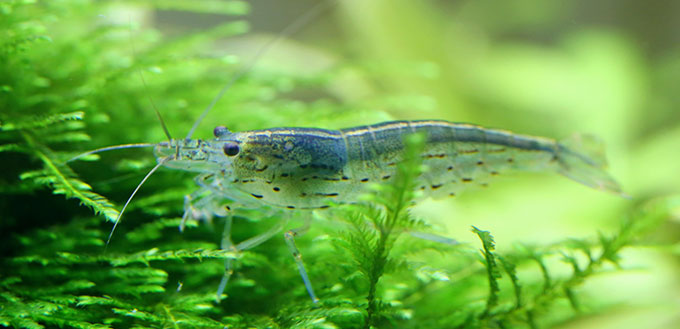
Enjoying life in groups of 3 or 4, the Amano Shrimp is a nice little addition to your clean-up crew. They will happily feed on most types of algae but are also keen eaters, who will happily munch through leftover fish food – sometimes to their detriment, as they may become too full to do their algae-eating job at times.
The Amano Shrimp is a handy little addition to tanks with a mid Ph range of around 6-7, although they prefer warmer waters of around 72-79°F. They will need a fish tank that has very few plants, as excessive copper levels can cause harm. Otherwise, they are fairly adaptable and grow to around 2 inches in length, making them very easy to care for.
Twig Catfish
Catfish are often referred to as freshwater sucker fish, thanks to their hoovering capabilities and penchant for sticking to the tank walls while eating up algae. The Twig Catfish (or Whiptail Catfish, as it is also commonly known) will, however, likely spend most of their time along the floor of your tank hoovering up algae and leftover food.
The Twig Catfish enjoys a tank that is between 73-79°F and they can grow up to 5 inches, or 20 centimeters, in length. Their natural brown and tan colored bodies can be hard to spot at times, although their long tail is easily identifiable. They also enjoy having plenty of places to hide, so lots of plants or bog wood is preferred in their tanks.
Again, these guys are keen eaters so very few are required – even in large tanks. They’re also very docile and will get along with most of their fellow residents, although this makes them easy picking for others, such as the Barb or Cichlids.
Ramshorn Snail
For those fish tanks with lots of plants, the Ramshorn Snail is ideal. These guys mostly ignore plants in favor of algae, and they’re also prone to eating fish eggs and leftover food, making them a great all-rounder as an aquarium cleaning snail.
Growing to a maximum of 2cm, the Ramshorn Snail will happily clear up your fish tank, as well as any decorations or rocks you may have. Although, as with other snails, you should bear in mind that predatory fish will enjoy snacking on these additions to your tank.
Easy to spot due to their ram-horn shape (which is, not surprisingly, their namesake), these snails will need hard, warm water with a Ph of 7 or above in order to maintain the density of their shells.
Cherry Shrimp
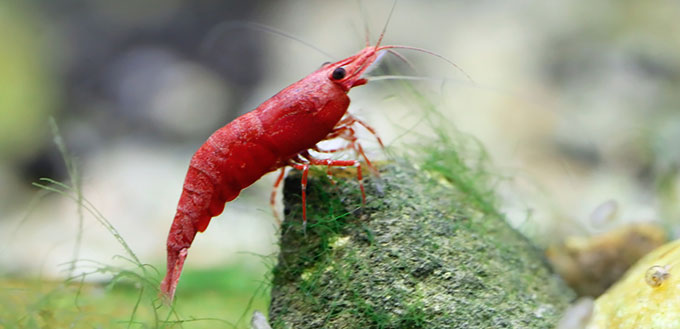
The Cherry Shrimp is easy to spot, thanks to it’s bright red hue, and can be easily sought out at most local pet stores. Their small size makes them ideal for getting to those hard-to-reach spots that many other algae eating fish can’t reach – as well as being able to hide from predatory fish. This makes them a great choice for more diverse aquariums.
These guys will eat most types of algae, as well as any leftover food, making them a great choice as an aquarium cleaning shrimp. They’re also very easy to breed – so do keep an eye on their numbers if you aren’t looking to farm them.
Final Thoughts
While having algae eating fish is always a huge benefit to your tank, do remember that they will also need to suit the set up that you and your current fish are happy with. Adding in even the best algae eaters won’t help a great deal if these new additions aren’t happy with the conditions of your tank, so watch for similarities, to choose the right algae eater for your needs.
Source:
- Caroline Golon, Tips for Freshwater Aquarium Success, VetStreet


